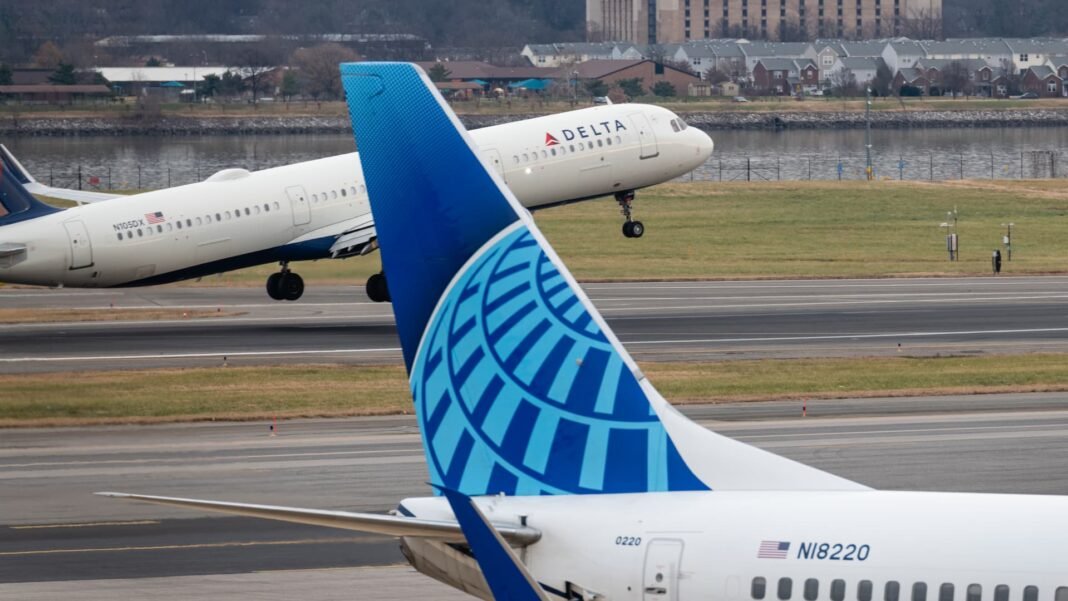U.S. Airline Industry: Leadership, challenges, and Innovation
The American airline sector is dominated by two major players-United Airlines and Delta Air Lines-whose combined profits accounted for more than 86% of the total earnings among the seven largest U.S. carriers last year. This dominance highlights their significant foothold in an industry where profit margins typically hover below 4%, a stark contrast to nearly 20% margins seen in other leading U.S. industries.
while overall profitability remains slim across the board, these airlines have successfully leveraged extensive route networks and a focus on premium travel options to maintain financial strength. Together with American Airlines and Southwest, they control approximately three-quarters of domestic flight capacity, underscoring their market influence.
Strategic Advantages: Brand Loyalty and Premium Services
United’s leadership views its competitive landscape as tiered: itself at the top alongside Delta as its main rival, with all other airlines trailing behind. This ranking reflects not only market share but also deep-rooted brand loyalty that translates into consistent revenue streams.
Both United and Delta emphasize international routes paired with upscale cabin offerings to better withstand economic fluctuations compared to smaller competitors.For example, United’s expanding trans-Atlantic flights to Europe have helped sustain higher unit revenues despite softening demand elsewhere.
“The resilience of these two brand-loyal carriers is increasingly clear-they thrive while others face challenges,” observes an industry analyst.
The Impact of Market Shifts: Declining Airfares Amid changing traveler Behavior
This year has witnessed an unexpected decline in airfare prices even during peak travel periods due to an oversupply of economy seats on many domestic routes. In June alone, average ticket costs fell by around 3.5% compared to last year despite ongoing inflation pressures nationwide.
The summer months-traditionally resistant to discounts-have instead been marked by widespread fare reductions as airlines attempt to attract cautious travelers who remain sensitive about spending amid economic uncertainty throughout 2025.
Adjusting Flight Capacity After Peak travel Seasons
Following a drop in passenger volumes after mid-August, major carriers including delta plan capacity cuts; however, profitability continues to elude some operators struggling with excess supply even during busier periods.
“The airline industry’s cycles are inevitable; what climbs must eventually descend,”
Diversifying Revenue Beyond Ticket sales
Pursuing profitability now extends beyond cost-cutting or reducing unprofitable flights; innovative revenue streams are becoming central across all major airlines:
- Southwest Airlines: Known historically for free checked bags and open seating policies, Southwest introduced fees for checked luggage this year along with plans for assigned seating options featuring extra legroom at premium rates-the only large U.S. carrier showing stock gains so far in 2025.
- Delta Air Lines: Testing refined segmentation within premium cabins aimed at customizing services more precisely according to diverse customer preferences-a strategy previously successful within economy class sections.
- United Airlines: Recently upgraded its Polaris business class experience alongside new dedicated lounges targeting long-haul travelers while expanding premium economy offerings that bridge coach fares with business-class comfort-a segment generating strong returns expected to grow further moving forward.
Catering To Varied Passenger Preferences through Tiered Offerings
This shift toward differentiated service levels acknowledges that not every traveler seeks full luxury experiences; rather varying amenity tiers better serve diverse customer segments while boosting loyalty program appeal and ancillary income from partnerships such as credit card collaborations-which recently saw growth exceeding 10% quarter-over-quarter for Delta alone, reaching $2 billion during Q2 2025.
Tackling Operational Hurdles Amid Growth Opportunities
A persistent shortage of air traffic controllers has forced flight reductions at critical hubs like newark Liberty International Airport impacting United’s short-term earnings forecasts through Q3 this year. Despite these obstacles both United’s revised outlooks hold potential upside fueled by unexpected surges in demand following earlier disruptions caused by trade tariffs affecting bookings earlier this calendar year.
A Competitive Rivalry Driven More By Scale Than Route Battles Alone
The rivalry between United and Delta remains fierce yet pragmatic; when asked about overlapping route launches such as flights from Los Angeles or Chicago O’Hare International Airport into Hong kong (a destination already served by United), leadership downplayed concerns emphasizing scale advantages over individual route conflicts.
“Operating thousands of daily flights means adding a few new routes isn’t transformative,” a senior executive explained,“but it signals competitors feel pressured enough they’re willing operate money-losing services.”





